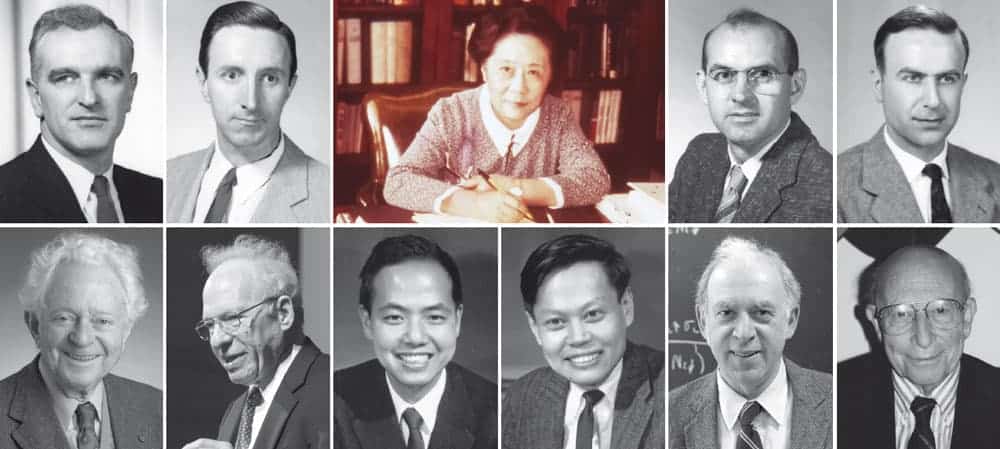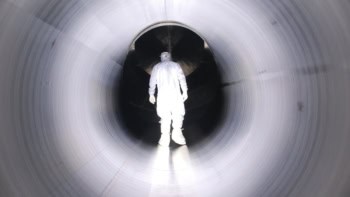
The Chinese-American particle physicist Tsung-Dao Lee died on 4 August at the age of 97. Lee shared half of the 1957 Nobel Prize for Physics with Chen Ning Yang for their theoretical work that overturned the notion that parity is conserved in the weak force – one of the four fundamental forces of nature. Known as “parity violation”, it was proved experimentally by, among others, Chien-Shiung Wu.
Born on on 24 November 1926 in Shanghai, Lee began studying physics in 1943 at the National Chekiang University (now known as Zhejiang University) and, later, at National Southwest Associated University in Kunming. In 1946 Lee moved to the US to the Univeristy of Chicago on a Chinese government fellowship, doing a PhD under the guidance of Enrico Fermi, which he completed in 1950.
After his PhD, Lee worked at Yerkes Astronomical Observatory in Wisconsin, the University of California at Berkeley and the Institute for Advanced Study at Princeton before moving to Columbia University in 1953. Three years later, he became the youngest-ever full professor at Columbia, remaining at the university until retiring in 2011.
Looking in the mirror
It was at Columbia where Lee did his Nobel-prize-winning work on parity, which is a property of elementary particles that expresses their behaviour upon reflection in a mirror. If the parity of a particle does not change during reflection, parity is said to be conserved. But since the early 1950s, physicists had been puzzled by the decays of two subatomic particles, known as tau and theta.
These particles, also known as K-mesons, are identical except that the tau decays into three pions with a net parity of -1, while a theta particle decays into two pions with a net parity of +1. This puzzling observation meant that either the tau and theta are different particles or – controversially – that parity in the weak interaction is not conserved, with Lee and Yang proposing various ways to test their ideas (Phys. Rev. 104 254).

Credit where credit’s due?
Wu, who was also working at Columbia, then suggested an experiment based on the radioactive decay of unstable cobalt-60 nuclei into nickel-60. In what became known as the “Wu experiment”, she and colleagues from the National Bureau of Standards used a magnetic field to align the cobalt nuclei with their spins parallel, before counting the number of electrons emitted in both an upward and downward direction.
Wu and her team found that far more electrons were being emitted downwards then upwards, which for parity to be conserved would be the same for both the normal state and in the mirror image. Yet when the field was reversed, as it would be in the mirror image, they found that more electrons were detected upwards, proving that parity is violated in the weak interaction.
For their work, Lee and Ning Yang shared the 1957 Nobel Prize for Physics. Then just 30, Lee was the second youngest Nobel-prize winning scientist after Lawrence Bragg, who was 25 when he shared the 1915 Nobel Prize for Physics with his father, William Henry Bragg. It has been argued that Wu should have shared the prize too for her experimental evidence of parity violation, although the story is complicated because two other groups were also working on similar experiments at the same time.
Influential physicist
Lee went on to publish several books including Particle Physics and Introduction to Field Theory in 1981 and Science and Art in 2000. As well as the Nobel prize, he was also awarded the Albert Einstein Award in 1957 and the Matteucci Medal in 1995.
In the 1980s, Lee initiated the China-US Physics Examination and Application (CUSPEA) programme, which has since helped to train hundreds of physicists. He also was instrumental in the development of China’s first high-energy accelerator, the Beijing Electron-Positron Collider, which switched on in 1989. Overlooked for the Nobel: Chien-Shiung Wu
Robert Crease, a historian from Stony Brook University who interviewed Lee many times, said that Lee also had a significant influence on the Brookhaven National Laboratory in New York. “He did some of his Nobel work there in the summer of 1956,” says Crease. “Lee and Yang would make regular Friday-afternoon trips to the local Westhampton beach where they would draw equations in the sand. They’d also yell at each other so loudly that others could sometimes hear them down the hall.”
Later, in the 1990s, Lee also played a role in the transition of Brookhaven’s ISABELLE proton-proton collider into the Relativistic Heavy-Ion Collider. “He was a mentor to many people at Brookhaven,” Crease adds. “He was artistic too – he made many sculptures – and was funny. I was honoured when Lee asked me to sign a copy of my edited autobiography of the theorist Robert Serber, who had adored him.”
“His groundbreaking contributions to his field have left a lasting impact on both theoretical and experimental physics,” noted Columbia University President Minouche Shafik in a statement. “He was a beloved teacher and colleague for whom generations of Columbians will always be grateful.”
At a reception in 2011 to mark Lee’s retirement, William Zajc, chair of Columbia’s physics department, noted that it was “impossible to overstate [Lee’s] influence on the department of physics, on Columbia and on the entire field of physics.”
Lee, on the other hand, noted that retirement is “like gardening”. “You may not be cultivating a new species, but you can still keep the old beautiful thing going on,” he added.
- A memorial service in honour of Lee will be held at 9.00 a.m. (CST) on 25 August 2024 at the Tsung-Dao Lee Institute in Shanghai, Chaina, with an online stream in both English and Chinese. More information, including an invitation for colleagues to share condolences, photos or video tributes, is available on the Tsung-Dao Lee memorial website.



